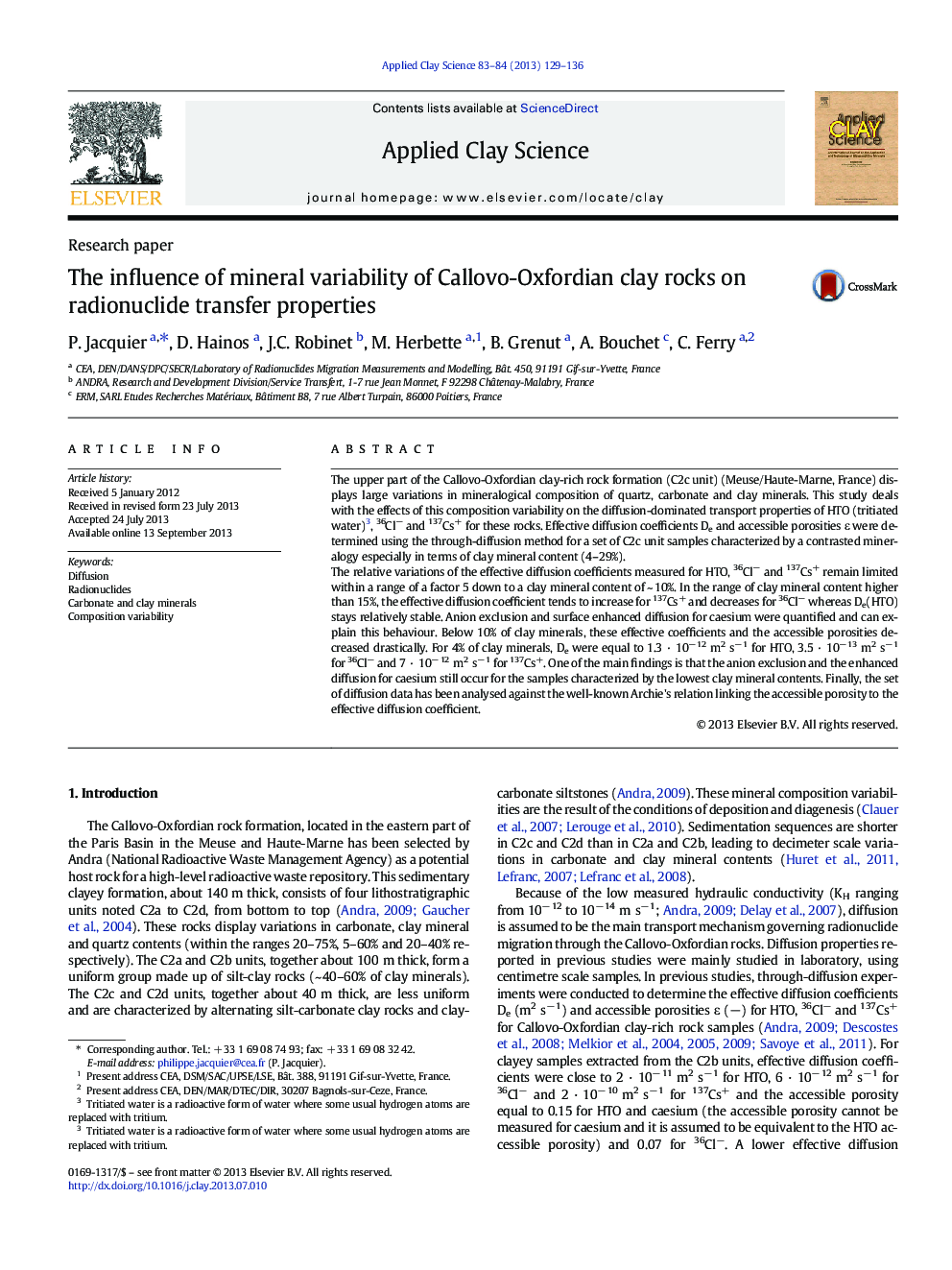| Article ID | Journal | Published Year | Pages | File Type |
|---|---|---|---|---|
| 1694875 | Applied Clay Science | 2013 | 8 Pages |
•De of 36Cl− decreases with increasing clay mineral content of clay rocks.•De of 137Cs+ increases with increasing clay mineral content of clay rocks.•The anion exclusion still occurs in samples with low clay mineral content.•The surface enhanced diffusion for caesium diffusion still occurs in such samples.
The upper part of the Callovo-Oxfordian clay-rich rock formation (C2c unit) (Meuse/Haute-Marne, France) displays large variations in mineralogical composition of quartz, carbonate and clay minerals. This study deals with the effects of this composition variability on the diffusion-dominated transport properties of HTO (tritiated water)3, 36Cl− and 137Cs+ for these rocks. Effective diffusion coefficients De and accessible porosities ε were determined using the through-diffusion method for a set of C2c unit samples characterized by a contrasted mineralogy especially in terms of clay mineral content (4–29%).The relative variations of the effective diffusion coefficients measured for HTO, 36Cl− and 137Cs+ remain limited within a range of a factor 5 down to a clay mineral content of ~ 10%. In the range of clay mineral content higher than 15%, the effective diffusion coefficient tends to increase for 137Cs+ and decreases for 36Cl− whereas De(HTO) stays relatively stable. Anion exclusion and surface enhanced diffusion for caesium were quantified and can explain this behaviour. Below 10% of clay minerals, these effective coefficients and the accessible porosities decreased drastically. For 4% of clay minerals, De were equal to 1.3 · 10− 12 m2 s− 1 for HTO, 3.5 · 10− 13 m2 s− 1 for 36Cl− and 7 · 10− 12 m2 s− 1 for 137Cs+. One of the main findings is that the anion exclusion and the enhanced diffusion for caesium still occur for the samples characterized by the lowest clay mineral contents. Finally, the set of diffusion data has been analysed against the well-known Archie's relation linking the accessible porosity to the effective diffusion coefficient.
